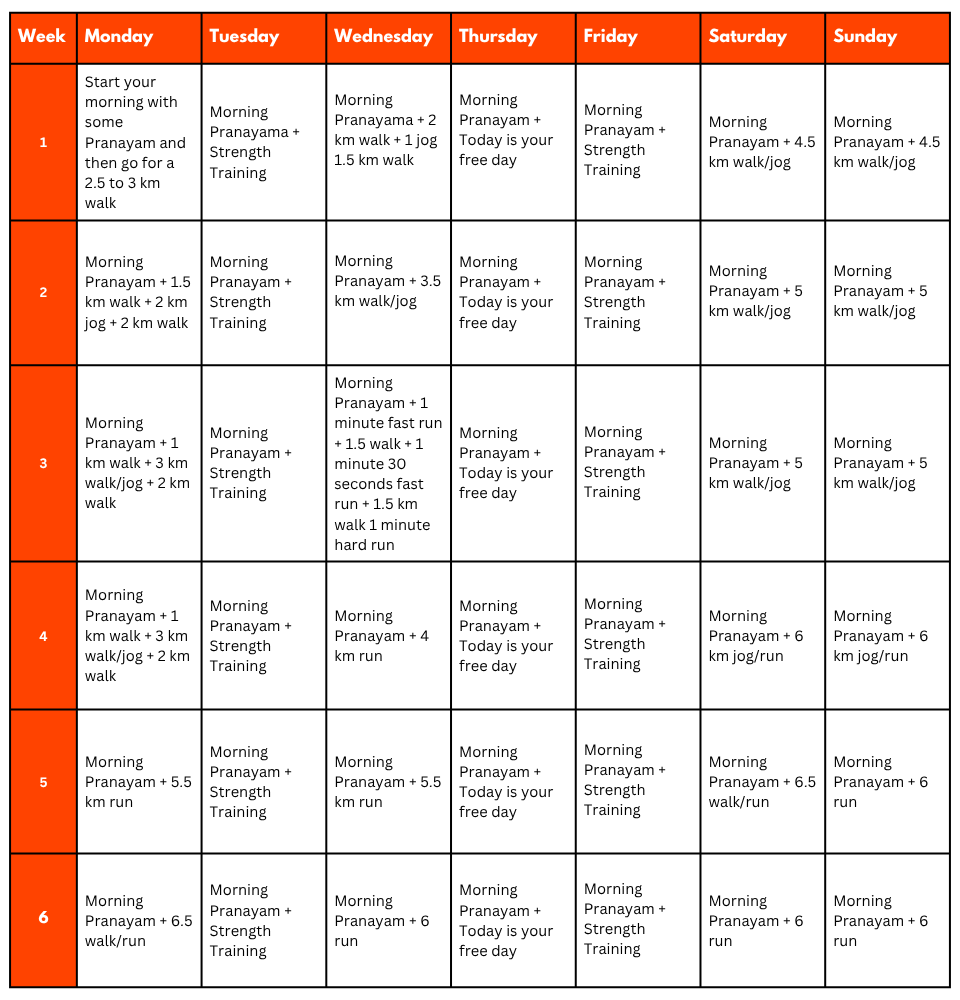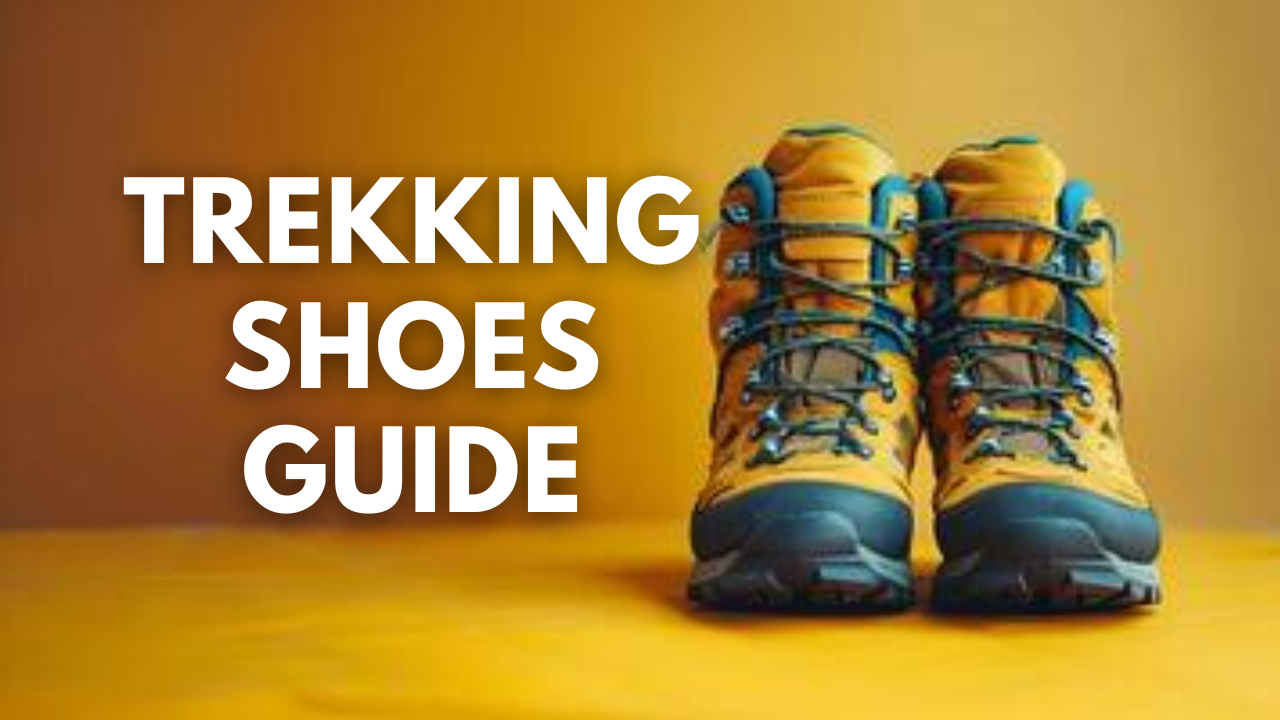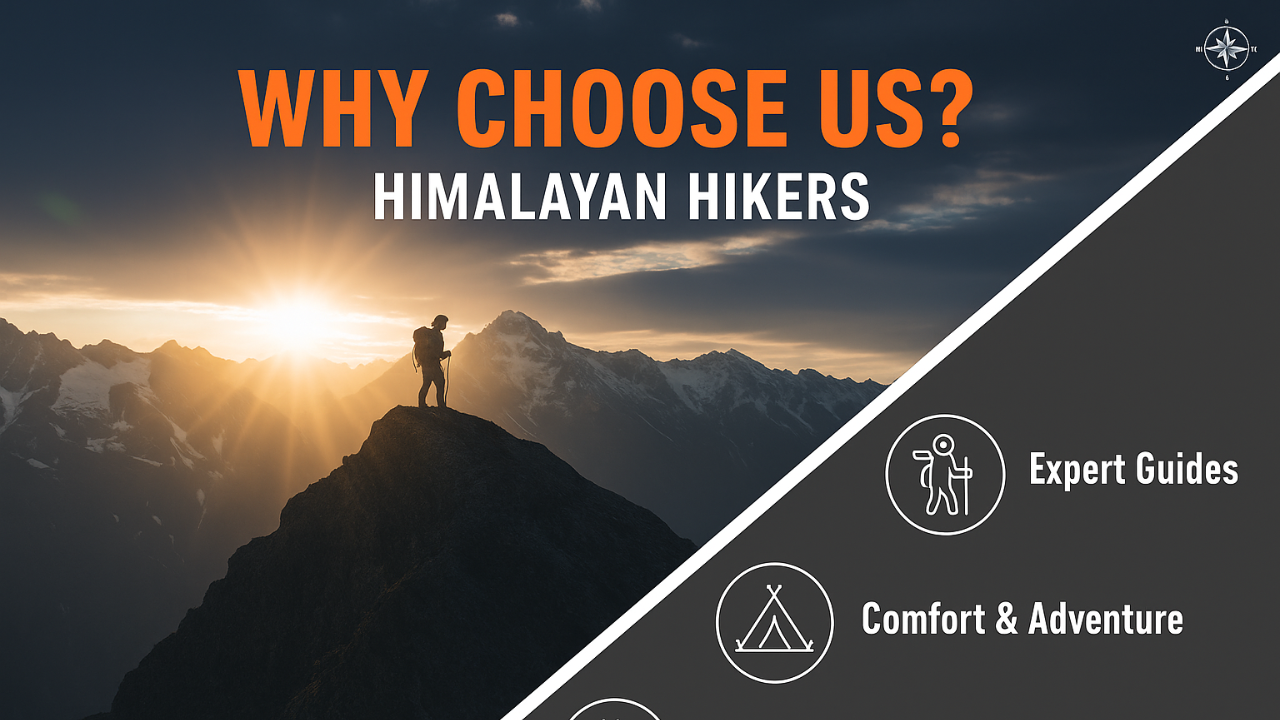The Shumga Top trek starts from Shangarh village which is a perfect combination of lush grasslands and small village houses. It is famous for the ancient temples. Pass through dense forests of pines, cedar and Rhododendrons and camp near sacred Sara Lake.
Explore the variation in vegetation and after the treeline recedes, come across the alpine meadows where Monal, Koklash, Tragopan etc. can be easily spotted.
Best Summit Views of Shumga Top Trek
At Shumga top, there is Jogni deity’s shrine and prayer flags around. It is believed that Goddess protects the mountains. The summit offers the best panorama views –
Towards the south Banjar, Mandi and Thachi can be seen at a distance and to the north lies towering Great Himalayan peaks. On a clear day spot regions of Kinnaur and Spiti. Towards west, Beas River flowing through kullu valley is visible and the high peaks visible from there are Gushu, Pishu, Kingkullen, Shupakuni, Vasuki Nag and snow peak in Rakti.
Key Points of Shumga Top Trek
Level: Moderate
Proper conditioning & training of body required
Need proper gear & clothing for sub-zero temperature
Shoes are the single most important equipment.
High Altitude requires proper acclimatization.
Beautiful landscapes so carry good photo gear & Extra battery backup.
Travel light
The backpack should not exceed 10kgs.
Must Read about Shumga Top Trek
Duration – 5 days (Mandi to Mandi)
Best Season – Throughout the year
Level – Moderate
Highest point – 3810 m
Weather – Nights are cold and day temperature is pleasant during the season.
Temperature – Day (10°C to 15°C) Night (0°C to 7°C)
Starting point – Mandi
Shumga Top Trek Guide
Day 1 – Mandi to Shangarh (2050 m)
Day 2 – Shangarh to Sara Lake (2744 m) (4/5 hours)
Day 3 – Sara Lake to Shumga Top (3810 m) and descend to Shumga Thach (5/6 hours)
Day 4 – Shumga Top to Shangarh (2050 m) (4/5 hours)
Day 5 – Shangarh to Mandi
Day 1 :Mandi to Shangarh (2050 m)
Reach Mandi in the morning, the vehicle will be arranged from there. Witness Pandoh Dam en route, it is an attractive site in Manali. We will follow Mandi – Aut tunnel path, taking a small halt at Hanogi Mata temple.
Ahead, you come close to the Sainj River and wide meadows comes into sight.
The tower temples will leave you staring at them. Reach Shangarh, the combination of green grasslands and small village houses seems perfect. Spend your night here in a homestay or tents.
Day 2 : to Sara Lake (2744 m) (4/5 hours)
Post breakfast, start the trek from Shangarh and head towards the sacred Sara Lake. The walk is through thick forests of pine above Bargshanghar, here spot rich Flora and Fauna of Himalayas.
Packed lunch will be provided, have it on the way. And, after a 4 to 5 hours long hike reach this beautiful lake present amidst forest. Explore the raw nature, do not miss to watch the setting sun then settle for the day.
Day 3 :Sara Lake to Shumga Top (3810 m) and descend to Shumga Thach (5/6 hours)
After breakfast at Sara lake campsite, head towards your destination Shumga Top. The trail is surrounded by Junipers scrubs and Rhododendrons with more variation in greenery.
Reach the point where treeline recedes and you enter the wide meadows of Shumga. Monal, Koklash, Tragopan can be easily spotted here which attracts many wildlife photographers.
Reach Shumga top, there is Jogni deity’s shrine and prayer flags around. It is believed that deity protects the mountains. The summit is a ridge which separates Sainj and Tirthan valleys and offers panorama from the top.
Towards the south Banjar, Mandi and Thachi can be seen at a distance and to the north lies towering Great Himalayan peaks. On a clear day spot regions of Kinnaur and Spiti. Towards west, Beas River flowing through kullu valley is visible and the high peaks visible from there are Gushu, Pishu, Kingkullen, Shupakuni, Vasuki Nag and snow peak in Rakti.
Spend good time there observing beauty at its best and then get down to Shumga Thach, campsite for today.
Day 4 : Top to Shangarh (2050 m) (4/5 hours)
Have breakfast with heart-warming views of mountain peaks of Great Himalayan National Park. Start the descent to Bargshanghar and reach there in 4 to 5 hours.
Pick up will be from there then the drive will be to Shangarh.
Day 5 : Shangarh to Mandi
Post breakfast say goodbye to Shumga Top trek and get back to Mandi.

Mandatory Documents
Original and photocopy of government photo identity card- (Aadhar Card, Driving License, Voters ID, etc,)
Passport and Visa important to foreigners
Medical Certificate (First part should be filled by the Doctor and Second part by the Trekker)
Declaration Certificates
Note: – Many trekkers commit the same mistake of carrying unnecessary items on a trek which only makes the backpack heavy. It is important to know the right items to carry. It differs from season to season if you are trekking in summers then carry less layers of warm clothing and if you are trekking in winters carry enough layers to protect yourself against chilly cold.
Necessary Items for trekkers

Basic Trekking Gears

The Clothes You Should Bring On Satopanth Expedition

Head Gears

Foot Gears

Personal Care Essentials

Carry a Personal Medical Kit

Are you Looking for Trekking Equipment on Rent?
If any trekker requires trekking equipment on rent, Himalayan Hikers offers the best-quality gear available for rental. Many individuals are in need of such equipment, and renting provides a cost-effective solution, allowing them to access high-quality gear at an affordable price without the need for a significant investment for short-term use.

Trek Equipment You can book directly on first day at the Base Camp.
Note:-
Please take all medicines only when prescribed by the doctor. In case you face any problem during your trek,
discuss and take advice from the Professional guide.
The Trek is one of the most popular treks in Uttarakhand, requiring both physical preparation and mental readiness. Although it is categorized as a moderate trek, reaches an elevation of over 12,720 feet and traverses remote Himalayan terrain, which can be physically and mentally challenging. Here's how you can prepare yourself for a safe and successful accomplishment of the Trek:
Physical Fitness
Building a good fitness base is essential for every trekker. The Trek itinerary involves 5 to 6 hours of walking every day. Though the trails are well-marked, they are often bumpy and include steep uphill sections, which may affect your stamina. You can overcome your physical limitation with a 6-week training program that you can begin about 2 months before your Trek. Your 6-week fitness routine should include

Pro Tip: If you have time, you can skip the Sunday training and go for a long-distance walk or mini day-hike (7–10 km) with a loaded backpack to simulate real trekking conditions. A short 1-day hike around your city/town can help a lot.
Mental Preparation
Physical strength is only half the journey, the other half is mental resilience. The trail takes you through remote clearings, steep climbs, cold starry nights, and no mobile connectivity. Be prepared to:
(I) -
Detach from the digital world.
(II) -
Embrace basic mountain living (camping, toilet tents, limited electricity).
(III) -
Push through moments of fatigue, weather discomfort, or altitude effects.
Himalayan Hikers is a reputable trekking company that places a high priority on safety. Here are some of the safety measures they take to ensure the safety of their clients during the Trek:
Experienced Guides: Himalayan Hikers hires experienced and certified guides who are well-versed in the terrain, weather conditions, and local culture. These guides have first-hand knowledge of the routes and are equipped to handle any emergency situations that may arise.
Proper Gear: The company provides all the necessary gear and equipment to their clients to ensure comfort and safety during the trek.
Hygiene and Sanitation: Himalayan Hikers places great emphasis on hygiene and sanitation during the Trek. They provide clean drinking water, hand sanitizers, and toilet tents to ensure that their clients are healthy and comfortable.
Emergency Services: The company has a well-defined protocol for handling emergency situations. They have a team of trained medical professionals who are available 24/7 and can be quickly mobilized in case of an emergency.
Acclimatization: Himalayan Hikers follows a gradual acclimatization process during treks to ensure that their clients adjust to the high altitude gradually. They also monitor the health of their clients regularly and provide necessary medical attention if required.
Overall, Himalayan Hikers places a great emphasis on safety and takes all necessary measures to ensure the safety and well-being of their clients during treks.
No FAQs available for this trek.












